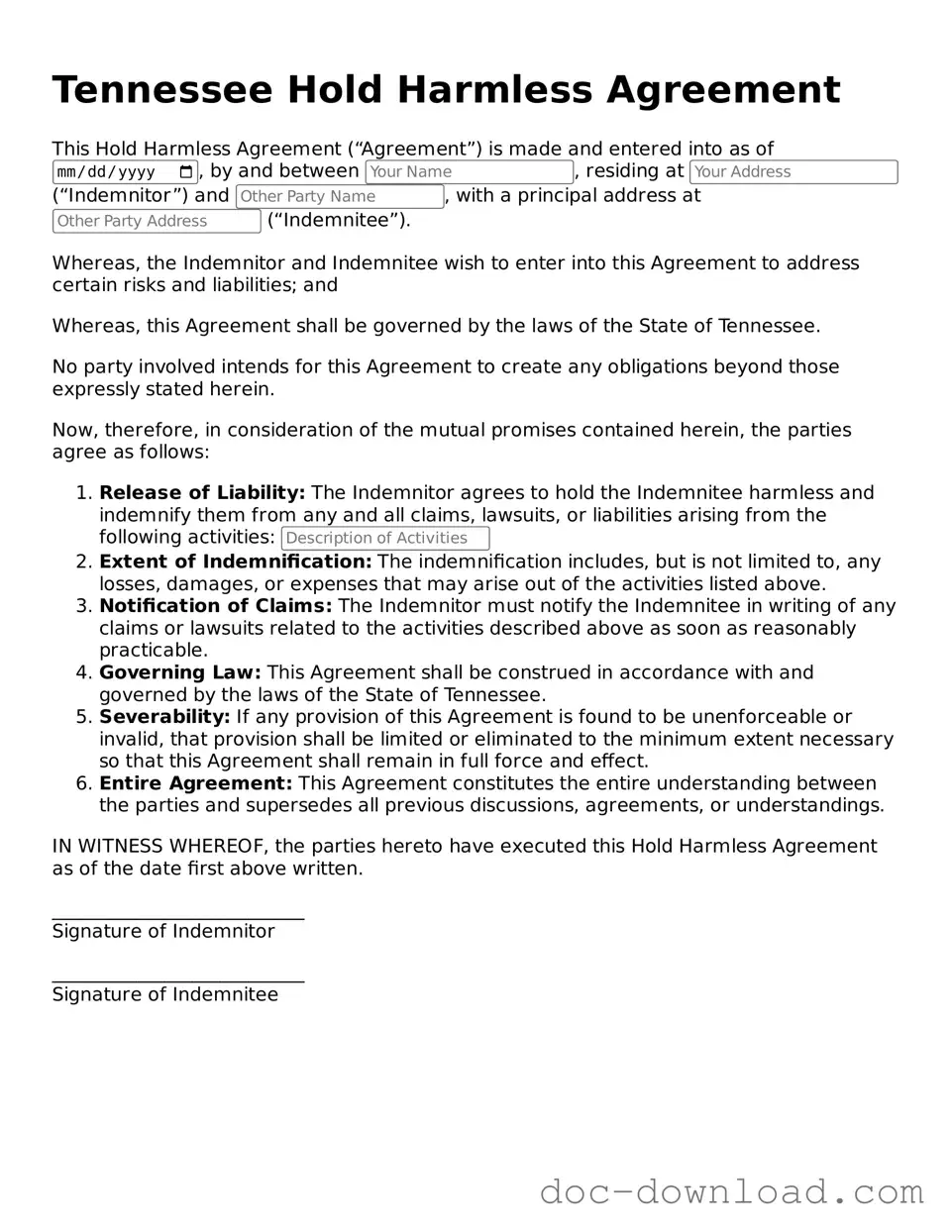The Tennessee Hold Harmless Agreement is similar to a Release of Liability form. Both documents serve the purpose of protecting one party from legal claims made by another party. In a Release of Liability, the individual agrees not to hold the organization or individual responsible for any injuries or damages that may occur during an activity. This is particularly common in sports or recreational activities where risks are inherent. By signing this document, participants acknowledge the risks involved and agree to waive their right to sue for any resulting injuries.
Another similar document is the Indemnity Agreement. This type of agreement not only protects one party from claims made by another but also requires one party to compensate the other for any losses or damages incurred. In essence, if one party suffers a loss due to the actions of another, the indemnifying party agrees to cover those costs. This can be particularly important in business relationships where one party may take on more risk than the other.
The Liability Waiver is yet another document that shares similarities with the Hold Harmless Agreement. A Liability Waiver is often used in conjunction with activities that involve a degree of risk, such as extreme sports or adventure activities. Participants sign this waiver to acknowledge that they understand the risks and agree not to hold the organizers liable for any injuries sustained. Both documents aim to reduce the risk of litigation by making it clear that participants accept responsibility for their own safety.
Next is the Assumption of Risk Agreement. This document explicitly outlines the risks associated with a particular activity and requires participants to acknowledge and accept those risks before engaging in the activity. While the Hold Harmless Agreement focuses on relieving one party of liability, the Assumption of Risk Agreement emphasizes the participant's understanding and acceptance of the potential dangers involved.
The Consent to Treat form is also related, especially in medical or healthcare contexts. This document allows medical professionals to treat a patient while also protecting them from legal claims related to the treatment provided. Patients agree to the treatment and acknowledge that they understand the potential risks involved. While this form is more specific to healthcare, it shares the underlying principle of informed consent and the acceptance of risk.
To ensure your assets are distributed according to your wishes, consider using a well-structured document like a "formal Last Will and Testament" that outlines your intentions clearly. For more information and to access a template, visit this guide.
The Non-Disclosure Agreement (NDA) is another document that, while different in purpose, shares the theme of protecting one party from potential claims. An NDA is used to protect confidential information shared between parties. By signing, one party agrees not to disclose sensitive information to others, thus safeguarding the interests of the disclosing party. Both NDAs and Hold Harmless Agreements aim to mitigate risk, albeit in different contexts.
The Service Agreement also bears some resemblance. This document outlines the terms and conditions under which services will be provided, often including clauses that limit liability for one party. While primarily focused on the service relationship, it can include provisions that protect the service provider from claims arising from the services rendered, similar to how a Hold Harmless Agreement operates.
Lastly, the Partnership Agreement can be considered similar in that it often includes clauses that address liability and risk management among partners. This document outlines the roles, responsibilities, and expectations of each partner. It may contain provisions that protect partners from being held liable for the actions of others, similar to the protective nature of a Hold Harmless Agreement. Both documents emphasize the importance of understanding the risks involved in a relationship, whether personal or professional.
